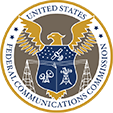
The Future of TCPA Compliance and 1:1 Consent

The Future of TCPA Compliance and 1:1 Consent
Traditional colleges and universities have seen quite a bit of change of the past decade. The definition of who their students are and what they want from their education partners has shifted dramatically. For marketers in these higher education institutions, that means that the need to move beyond just using demographics to drive student acquisition programs is even more critical. According to a recent study from Strayer University and U.S. News & World Report, “70 percent of Americans who have pursued a bachelor’s degree qualify as non-traditional students.”
These students are older, typically are working while pursuing a degree or certification, and come from much more diverse ethnic backgrounds. But that is not all. These students have much different expectations of the type of programs they are looking for and how they will be offered. According to another study by Quality Matters and Eduventures, one in 14 students at four-year schools are fully distance or remote students. And, for many schools that number is even higher. More and more students are looking for online programs and certifications. These kinds of programs are typically offered by non-traditional providers who, in some cases, serve specific career segments and industries. From coding schools, which offer free content and paid certifications, to degrees and programs which are offered exclusively online.
Leveraging Behavioral Data to Understand and Engage Prospective Students in Context
At Jornaya, we work with organizations in higher education to look at their leads and the journey that their prospective students take. We help them leverage indicators, outside of their standard demographics, so that they can make better decisions regarding their engagement with prospective students. As the demographics and expectations of prospective student have shifted, their behavior when evaluating education programs and providers has also changed. Prospective students research programs online, across multiple devices, and at their own pace. A traditional engagement cycle around fall enrollment is no longer the norm. In our 2016 Consumer Journey Analysis Research Paper, we looked at the consumer journey of a typical “education” lead that converts into an enrolled student. Here are some the key findings regarding the behavior and journey of prospective students:
Looking at all of this in context, you can better understand and prioritize your efforts to engage with prospective students who are high intent and are more likely to make an enrollment decision. Knowing the average time between consumer events, you can similarly time your engagement to maximize the effectiveness of your program in converting leads to enrolled students. And while purchasing third-party education leads may not be part of your marketing mix today, our data shows that 24% of leads on education brand sites visited a third-party site, before submitting a lead form on the brand site. That means your prospective students are spending time on other websites before engaging with you, helping you further understand their intent and to improve your attribution models.
This is performance marketing in practice: using consumer behavioral data to score and prioritize education leads; while optimizing your student acquisition programs to engage high intent prospective students to maximize enrollment.